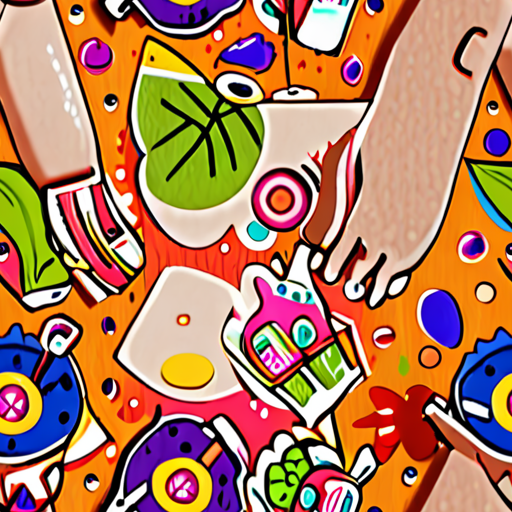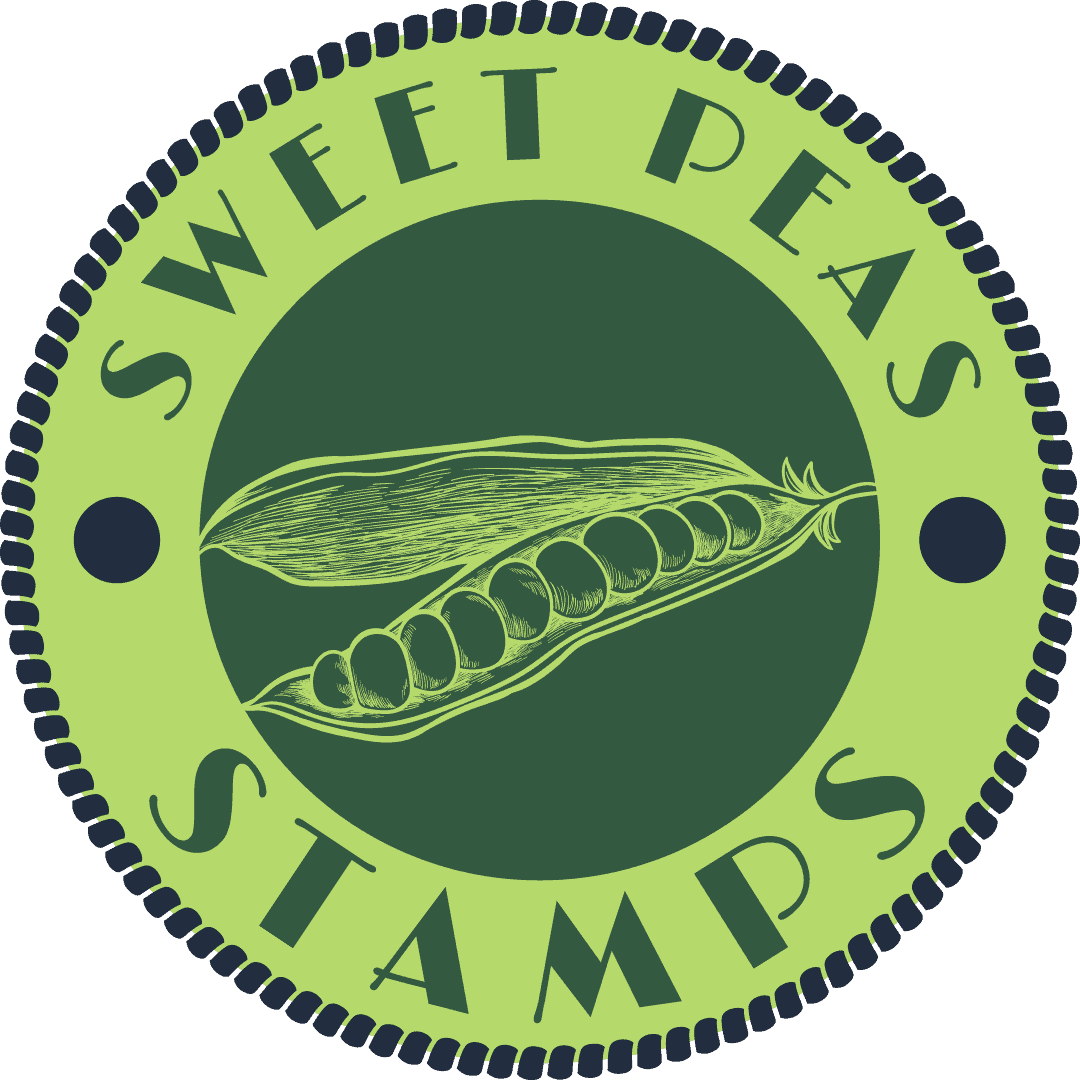Engage your little ones in a world of creativity and self-expression with a fun and interactive project that brings art and imagination together – making your own DIY stamps for kids! With just a few simple materials and some imagination, you can help your children unleash their artistic side and explore the endless possibilities of stamp-making. From creating unique designs and patterns to experimenting with different textures and colors, this project offers a wealth of opportunities for learning and growth. In this article, we’ll guide you through the process of making your own DIY stamps for kids, covering everything from choosing the right materials to tips and tricks for getting creative.

Make Your Own Stamps for Kids
Create fun and unique stamps with your little ones using everyday materials.
-
Materials Needed:
- Cut-out shapes or designs from sponges or foam sheets
- Ink pads or paint
- Cardboard or cardstock
- Scissors
- Tape
-
Step 1: Prepare the Stamp
Create a design or shape on the sponge or foam sheet using markers or paint. Cut out the design carefully.
-
Step 2: Assemble the Stamp
Glue the sponge or foam design onto a piece of cardboard or cardstock. Make sure it’s centered and secure.
-
Step 3: Add Ink or Paint
Dip the ink pad or paintbrush into the ink or paint and apply it to the sponge or foam design.
-
Step 4: Test the Stamp
Place the stamp onto a piece of paper and gently press down. Lift the stamp to reveal the printed design.
-
Step 5: Experiment and Create
Try different ink colors, sponge sizes, and designs to create unique and colorful stamps.
Get creative and have fun making your own stamps with your kids!
Additional Tips and Ideas:
- Use household items like sponges, foam sheets, and cardboard to create unique stamp designs.
- Experiment with different ink colors and textures to create interesting effects.
- Try using stencils or templates to create intricate designs.
- Make a set of matching stamps for a fun and coordinated look.
The Best Material for Homemade Stamps
When it comes to making homemade stamps, choosing the right material is crucial for achieving high-quality prints.
- Soft Foam Rubber: A popular choice among crafters, soft foam rubber is ideal for creating custom stamps. It’s available in various thicknesses, typically ranging from 1/8 inch to 1/4 inch. Old mouse pads or kitchen cabinet liner materials can be repurposed as a cost-effective alternative.
- EVA Foam: EVA foam, also known as ethylene-vinyl acetate foam, is another excellent option for homemade stamps. Its smooth surface and durability make it perfect for intricate designs and detailed prints.
- Rubber Sheets: Rubber sheets, specifically designed for crafting, offer a flexible and pliable surface for creating custom stamps. They come in various thicknesses and can be easily cut into shapes and sizes.
- Cork: Cork is a great eco-friendly option for homemade stamps. Its texture provides a unique print effect, and it’s easy to shape and mold into desired forms.
When selecting a material, consider factors such as durability, flexibility, and print quality. Experiment with different options to find the best fit for your needs and preferences.
Tips for Creating High-Quality Homemade Stamps
- Select the Right Ink: Choose a high-quality ink that suits your stamp material and printing surface.
- Design Your Stamp: Use a variety of tools and techniques to create intricate designs and patterns on your stamp.
- Test and Refine: Test your stamp on different surfaces and refine your design as needed to achieve optimal print quality.
Get Creative with Your Homemade Stamps!
With the right material and a little creativity, you can create unique and beautiful homemade stamps for various applications, from art projects to gift-giving and beyond.

Creating Your Own DIY Letter Stamp
To make a DIY letter stamp, you’ll need a few simple materials, including foam letters, glue, and a base material such as foam, wood, or cardboard. Here’s a step-by-step guide to get you started:
-
Materials Needed:
- Foam letters
- Glue
- Base material (foam, wood, or cardboard)
-
Step 1: Gather Materials
Find foam letters that fit your needs, whether it’s a single letter or a set of alphabet letters. You can purchase these at a local craft store or online. Make sure to choose letters that are sturdy enough to withstand repeated use.
-
Step 2: Prepare Base Material
Cut your base material into the desired shape and size. This will depend on how large you want your letter stamp to be. If using foam, you can cut it into a flat sheet or shape it into a more intricate design.
-
Step 3: Attach Letters to Base
Apply a small amount of glue to the back of each foam letter and attach them to the base material, making sure to space them evenly apart. Start with the center letter and work your way outwards to ensure symmetry.
-
Step 4: Add Additional Details (Optional)
If desired, you can add additional details such as texture or patterns to your letter stamp. This can be done using paint, markers, or other craft supplies.
-
Step 5: Finish and Use
Once your letter stamp is complete, let it dry completely before using it. To use, simply place the stamp on your desired surface and apply pressure to create a crisp impression.
Tips and Variations
For added durability, consider using a thicker base material or adding a coat of varnish to protect your letter stamp. You can also experiment with different shapes and designs to create unique letter stamps. Some popular alternatives to foam letters include wooden or plastic letters, which can offer a more rustic or modern look.
Related Projects
If you’re interested in exploring more DIY projects, check out our collection of DIY Craftsfor inspiration and ideas. From custom stencils to handmade cards, we’ve got you covered.
Get Creative with Sweet Pea Stamps
At Sweet Pea Stamps, we believe in empowering creativity and self-expression. Whether you’re a seasoned crafter or just starting out, our products and resources are designed to help you bring your ideas to life. Explore our website for more tips, tutorials, and inspiration to fuel your next project.
Can You Make Your Own Stamps?
As a crafter and DIY enthusiast, I’m excited to share with you the world of custom stamp making.
- Create Unique Designs
- Experiment with Various Materials
- Make Personalized Gifts
- Develop Your Crafting Skills
The Basics of Stamp Making
Stamp making involves carving or cutting designs into a material, typically rubber or foam, to create a custom stamp.
- Choose Your Material
- Select a Design
- Carve or Cut the Design
- Ink and Test Your Stamp
Materials Needed
You’ll need a few basic supplies to get started:
- Rubber or Foam Sheet
- Craft Knife or Carving Tool
- Ink Pad
- Paper or Cardstock
Tips and Tricks
Here are a few tips to keep in mind when making your own stamps:
- Start Simple
- Practice Makes Perfect
- Have Fun!
Get Creative with Your Stamps
Once you’ve mastered the basics, it’s time to get creative with your stamps!
- Try Different Ink Colors
- Add Embellishments
- Create Scenes or Characters
- Make Custom Gift Tags
Share Your Creations
Show off your handmade stamps and share your creations with friends and family!
- Post Photos Online
- Join a Crafting Community
- Host a Craft Party
- Enter a Contest
Printing Your Own Stamps at Home
You can definitely print your own stamps at home, and we’re excited to guide you through the process.
- What You’ll Need:
- A computer with internet access
- A printer capable of printing high-quality images
- Specialized paper or cardstock for printing stamps
- A design software or tool to create your custom stamp designs
- Designing Your Custom Stamps:
- Choose a design software or tool that suits your needs, such as Adobe Illustrator or Canva
- Select a template or start from scratch to create your custom stamp design
- Consider factors like size, shape, and color when designing your stamp
- Printing Your Stamps:
- Load your specialized paper or cardstock into your printer
- Print your custom stamp design onto the paper or cardstock
- Cut out your printed stamps to the desired size and shape
- Tips and Variations:
- Experiment with different paper types and textures for unique effects
- Try adding foil or metallic ink to give your stamps a premium look
- Consider using a die-cut machine for intricate designs or shapes
- Alternatives to Printing Your Own Stamps:
- You can also purchase pre-made stamps from online marketplaces or craft stores
- Some companies offer custom stamp services, allowing you to upload your design and receive printed stamps
At Sweet Pea Stamps , we offer a variety of stamp-making tools and resources to help you get started. Whether you’re a seasoned crafter or just beginning, our community is here to support and inspire you every step of the way.

Is it Illegal to Use Fake Stamps?
The use of counterfeit or fake stamps can have serious consequences, and understanding the laws surrounding this issue is crucial.
- Laws and Regulations
- Federal law prohibits the creation, distribution, and possession of counterfeit postage stamps.
- The United States Postal Service (USPS) takes a strong stance against the use of fake stamps, and violators may face fines and imprisonment.
- In addition to federal laws, many states have their own regulations regarding the use of counterfeit stamps.
- Some states consider the use of fake stamps a felony offense, punishable by imprisonment and hefty fines.
When it comes to collecting stamps, authenticity is paramount. Counterfeit stamps can devalue legitimate collections and undermine the trust between buyers and sellers.
- Consequences of Using Fake Stamps
- Using fake stamps can result in financial losses due to the potential devaluation of legitimate collections.
- Counterfeit stamps can also lead to legal issues, including fines and imprisonment.
- The use of fake stamps undermines the integrity of the philatelic community and can damage relationships between collectors and dealers.
As a collector or enthusiast, it’s essential to verify the authenticity of stamps before purchasing or using them.
Conclusion
The use of fake stamps is a serious offense with significant consequences. Understanding the laws and regulations surrounding this issue is crucial for collectors, dealers, and anyone involved in the philatelic community.
By prioritizing authenticity and taking steps to prevent the use of counterfeit stamps, we can maintain the integrity of our hobby and protect ourselves from potential financial and legal risks.

0 Comments